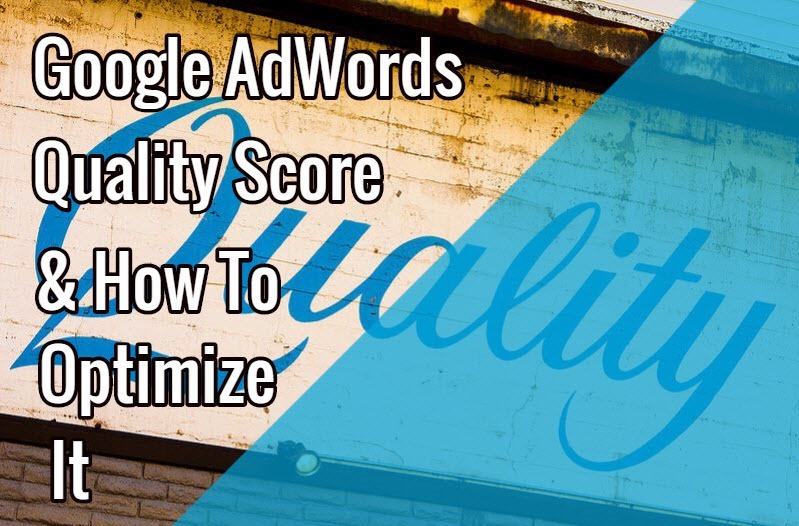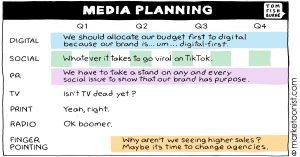
Whether you’re looking to attract new website visitors, grow online sales or keep customers coming back for more, Google AdWords takes the guesswork out of your marketing, connecting you to relevant customers across the web at the very moment they are searching for the things that you offer. The key to success here is to provide a great experience for users.
In fact, Google measures the quality of your ads through a diagnostic tool called Quality Score (QS). The QS is simply a metric used on each keyword on a scale of 1-10 (with 10 being the highest score and 1 being the lowest) to give you an idea of the quality of your ad copy and landing pages. The better your ads, the more relevant your ad and landing page are considered to be by Google. Ads with a good Quality Score are stronger every time one of your ads competes in the AdWords auction.
Understanding Quality Score
When it comes to writing search algorithms, the folks at Google deserve a pat on the back. Look at the Adwords Quality Score algorithm for instance. It’s brilliant how it accomplishes the dual objective of increasing revenue for Google while creating a better search experience for users.
The deal is simple: For a pay per click advertiser to do well in AdWords, he must obtain a high Quality Score from Google. For that to happen, the advertiser needs good PPC ad text that garners a high click through rate. This results in more revenue for Google. The advertiser also needs to create a quality experience for the Google referred visitor. This improves search and helps Google deliver the best results possible.
For example, suppose you have a website that sells socks. Paul is a potential customer looking for novelty men’s socks. What you want is when Paul types “novelty men’s socks” in Google’s search bar, he sees your ad about novelty socks, clicks on it, lands on your webpage and buys some snazzy new socks. In this instance, the customer makes a search for and finds exactly what he is looking for. This is what Google qualifies as a great UX (user experience), and as a result, it will reward you with a high Quality Score. When your Quality Score is high, you get more clicks. Your ad also ranks higher, thereby increasing your ROI.
To check your QS, look within the Keywords tab of your Google AdWords account by following the steps below.
- Select the Campaigns tab at the top.
- Click on the Keywords tab.
- To see the Quality Score of any keyword, click on the white speech bubble next to any keyword’s status.
- Alternatively, you can enable the Qual. score column in the statistics table.
As you can see, each keyword has its own QS between 1 – 10. This gives you a broad idea about the quality of your ads and includes components such as:
- Expected CTR
- Ad relevance
- And landing page experience
Each time an ad of yours competes in the AdWords auction, AdWords takes into account measurements of expected click-through-rate, the relevance of your ad and landing page experience. These measurements are combined with your bid and other factors to calculate a score called Ad Rank. Ad Rank affects you in multiple ways including:
- Ad auction eligibility, making it less expensive for your ads to get in an auction.
- Lower CPCs
- Lower first page bid estimates
- Lower top of page bid estimates
- Higher ad positions
- Eligibility for certain ad formats that require a minimum Quality Score
The takeaway: Higher Quality Scores translate into lower costs and better ad positions, bringing you the most bang for your bucks.
Improving Your Ad Quality
When it comes to Google AdWords, the ads that perform the best are usually the ones that people find the most relevant. This means that if you know what your customers want, those are the things that you want to focus on to make your keywords, landing pages, ads and campaigns most relevant. For example, you can:
1. Create Ad Groups That Are Very Specific
For any campaign, consider making each ad group focus on a single product or service. Relevance leads to higher quality ads and being specific is step one if you want to become more relevant. Using the example above, if you own a website that sells socks, consider creating different ad groups for the different types of socks you sell. You could have one ad group for your striped socks and another for your novelty socks.
2. Choose Keywords Well
In line with the argument for relevance when it comes to Google AdWords, for your ads, choose keywords carefully. They should directly relate to the theme of your landing page and of course, ad group. Ideally, you also want your keywords to be two or three words. For example, if you’re selling socks, generic keywords like “socks” or “accessories” are way too general to be effective. Much better keywords would be “novelty socks for men”, “fun socks for men” or “men’s striped socks”.
3. Include Your Chosen Keywords In Your Ad Text
Once you know what keywords you’re targeting, include those in your ad text, in particular in your ad’s headline. This is absolutely vital to show people and the engines that your ad is directly relevant to certain searchers.
4. Keep Your Ads Simple But Enticing
Whether you’re selling a product or marketing a service, it has to have a unique personality and it is your job to find it. That’s the recipe for success when it comes to good copywriting. You need to understand every detail of your product and capture a complete picture of it in the description of what you’re selling. Equally important, you need to know who you’re selling to and what perks you’re offering like promotions or free shipping.
5. Use A Compelling CTA
The next consideration: Closing the deal with your copy. It’s an important step because it’s where you ask for the sale. Your ad text should have a strong call-to-action.
6. Test Out Multiple Ads
Part of what makes Google AdWords so popular with businesses is that the Google product takes the guesswork out of your marketing. You can see exactly how many people notice your ads and what percentage of these potential customers are actually clicking to visit your site. From these measurements, you can derive actionable takeaways. You can then tweak your ads, try new keywords or experiment with different CTAs to see which practices prove to be the most effective.
Conclusion
In short, do you know of the old advice to college graduates: “Do what you love and all else will follow.” Well, in the world of Google AdWords, the advice is “Do what’s best for your users and your bottom line (and all else) will or at least should follow. And your Quality Score gives you a pretty good idea of how you’re performing.
Now Read
- How To Setup Your PPC Campaigns For Better Quality Scores, CTR, And ROI
- 5 Reasons You’re Not Getting Qualified Leads From AdWords
* Lead image adapted from Thomas Hawk
Guide To Google AdWords Quality Score (& How You Can Optimize It)
The post Guide To Google AdWords Quality Score (& How You Can Optimize It) appeared first on Search Engine People Blog.
(164)






